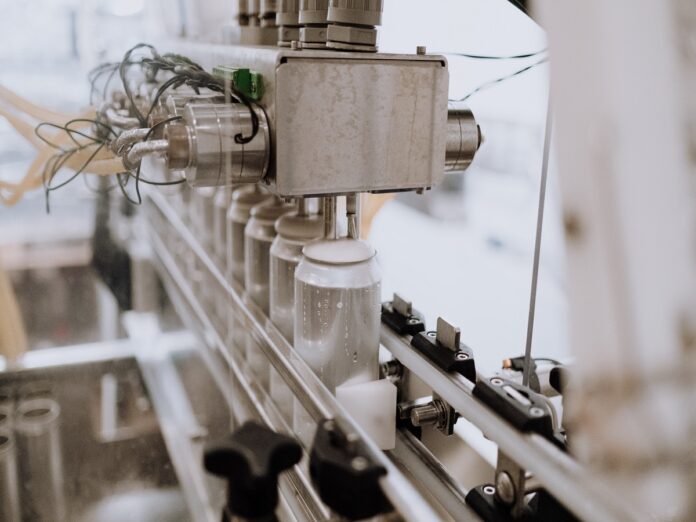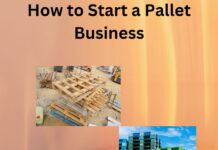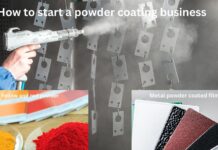Injection molding is a manufacturing process that has grown in popularity in a variety of industries, including automotive, medical, consumer goods, and others. Melting plastic pellets and injecting them into a mold results in a durable, precise, and cost-effective finished product. Injection molding has become an essential component of modern manufacturing, allowing companies to produce high-quality parts more quickly and at a lower cost than traditional methods.
This blog post aims to provide a comprehensive guide to starting an injection molding business, covering topics such as market research and business planning, as well as quality control and regulatory compliance. This post will provide valuable insights and strategies for success in the injection molding industry, whether you are an entrepreneur looking to start a new venture or an established business looking to expand your operations.
Quick Facts
| Industry trend | Growing |
| Investment range | $50,000 – $500,000 |
| Revenue potential/annual | $100,000 – $5,000,000 |
| Commitment | Full-time |
| Time to build | 6-12 months |
| Profit potential | $50,000 – $500,000 Per Year |
Step 1: Market Overview of Injection Molding Business
Before starting an injection molding business, it is critical to conduct extensive market research in order to understand the demand for injection molding products in the US market. This includes researching competitors, analyzing market trends, and identifying potential customers.
Injection molding products are in high demand in a variety of industries, including automotive, medical, and consumer goods. As a result, businesses have numerous opportunities to capitalize on this demand and expand their operations. However, market research is required to identify the specific areas of the market that are expanding and have the highest demand for injection molding products.
In addition to understanding the demand for injection molding products, it is critical to identify potential customers and market competitors. This can assist companies in developing targeted marketing strategies and staying ahead of the competition. Manufacturers, distributors, and retailers who require injection molding products as part of their operations may be potential customers. Meanwhile, competitors could include other injection molding companies or traditional manufacturers who provide comparable products.
The market size, measured by revenue, of the Contract Injection Molding Manufacturing industry is $22.6bn in 2023. The market size of the Contract Injection Molding Manufacturing industry is expected to increase 1.6% in 2023.
Step 2: Prepare Business Plan
Making a business plan is an important step in starting an injection molding company. The plan should include the company’s goals and objectives, marketing strategies, and financial projections.
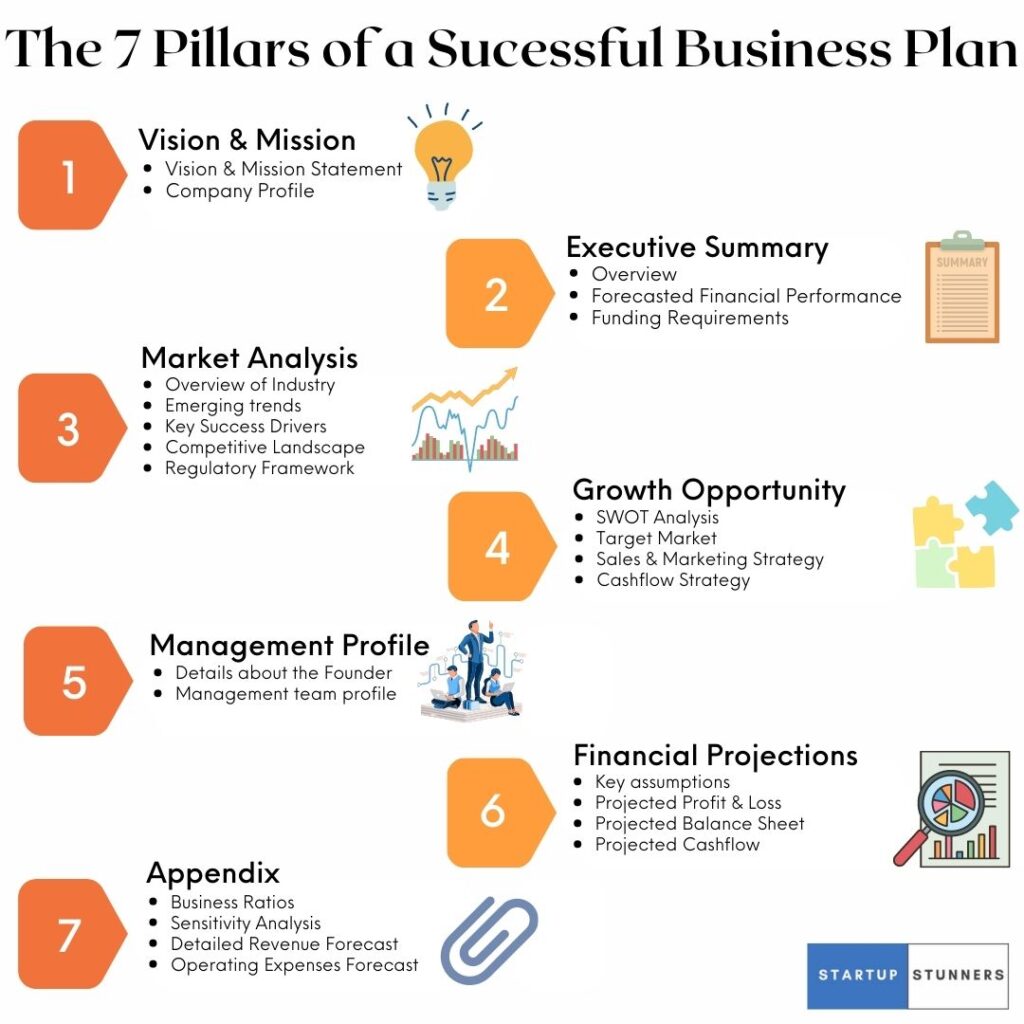
Entrepreneurs can ensure that they have a clear roadmap for success by creating a business plan for the injection molding business, complete with well-defined goals and strategies for achieving them. In a competitive and demanding industry, this will help to reduce risk and increase the likelihood of success.
Startup Stunners has been providing high-quality business plan writing services for years, and we’re ready to assist you in developing a comprehensive, effective plan that will propel your company forward. Our team of experts is committed to assisting you in achieving your business objectives and obtaining funding from banks, grants, or other sources. We’re here to help you succeed whether you’re a beginner, entrepreneur, or small business owner. Don’t put it off any longer; visit startupstunners.com/contact-us/ today and let us lead you to success!
Step 3: The injection molding process
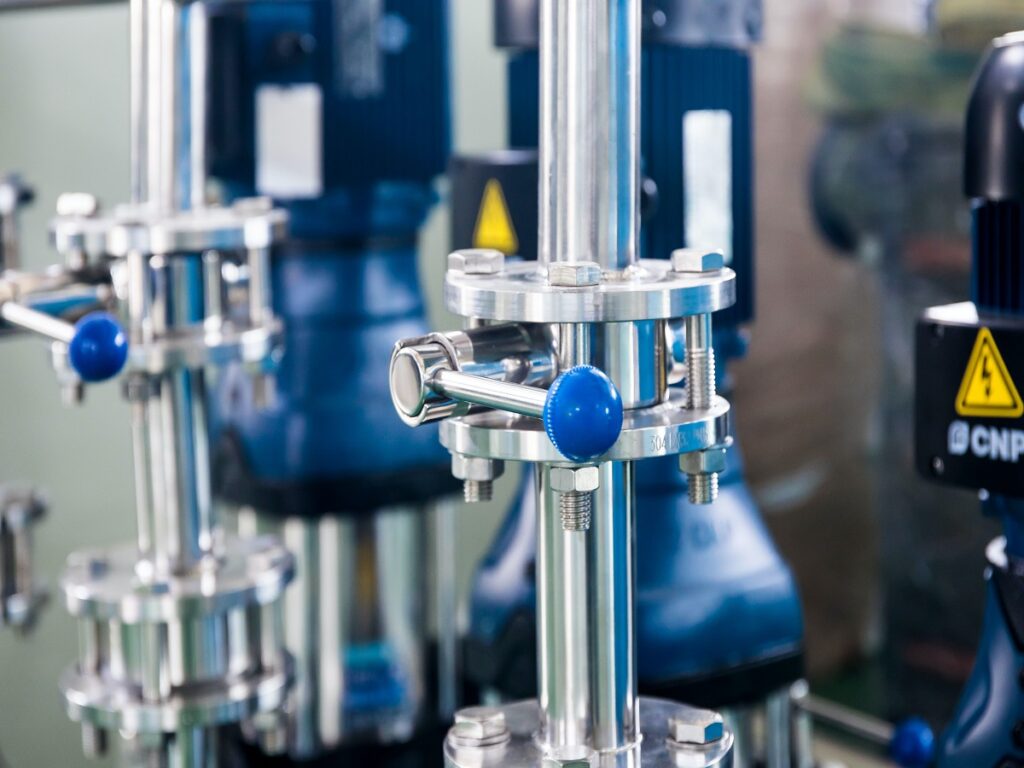
The injection molding process is a method of producing plastic parts of various shapes and sizes. The procedure involves melting plastic pellets in a heated barrel and then injecting the molten plastic under high pressure into a mold. The mold is opened and the finished product is ejected after the plastic has cooled and solidified.
Plastic pellets are fed into the heated barrel of the injection molding machine to begin the injection molding process. The plastic is melted inside the barrel by heat and pressure, and the molten plastic is then injected into the mold cavity under high pressure. The mold cavity is usually divided into two halves that fit together to form the desired shape of the finished product. During the injection process, the injection molding machine applies pressure to keep the mold halves closed.
The molten plastic is allowed to cool and solidify after being injected into the mold cavity. The cooling time is determined by the part’s size and complexity, as well as the type of plastic used. Cooling can be accelerated by passing cold water or air through the mold.
The mold is opened and the finished product is ejected after the plastic has cooled and solidified. Ejection systems are typically made up of pins or ejector plates that push the finished part out of the mold. After that, the part can be trimmed or finished as needed to remove excess material or improve its appearance.
Injection molding is a highly automated and efficient manufacturing technique that can produce high-quality plastic parts with tight tolerances and consistent dimensions. It is used in many industries, including automotive, medical, and consumer goods, and it can be adapted to produce parts of varying sizes, shapes, and complexities.
Step 4: Injection molding machine types
Injection molding machines are specialized machines that use the injection molding process to produce plastic parts. These machines come in a variety of sizes and types, each with its own set of features and benefits. This section will go over the various types of injection molding machines and how they work.
- Hydraulic Injection Molding Machine: The most popular type is the hydraulic injection molding machine. The injection and clamping forces are controlled by hydraulic systems. These machines are adaptable, capable of producing pieces of varied sizes and complexity. A hydraulic injection molding machine costs between $50,000 and $200,000 on average, depending on size and features.
- Electric Injection Molding Machine: Electric injection molding machines use electric motors to power the injection and clamping systems. They are well-known for their energy economy and quieter operation, making them ideal for cleanrooms or noise-sensitive regions. Electric machines are suited for high-precision applications because they have shorter cycle durations and higher precision. An electric injection molding machine costs between $80,000 and $300,000 on average, depending on size and capabilities.
- Hybrid Injection Molding Machine: Hybrid machines combine hydraulic and electric systems to control the injection and clamping forces. These machines combine the advantages of both technologies, such as increased energy efficiency, shorter cycle times, and improved precision. Hybrid machines are especially well-suited for mass production. A hybrid injection molding machine costs between $100,000 and $400,000 on average, depending on the machine’s size and hybrid system setup.
- Two-Shot Injection Molding Machine: Two-shot injection molding machines have two distinct injection units that allow them to produce parts with two different materials or colors. These machines are extensively employed in the automotive and consumer products industries for intricate parts that require accurate material or color placement. A two-shot injection molding machine’s average cost varies greatly depending on its size, features, and complexity, although it normally ranges from $200,000 to $1 million.
Clamping, injection, cooling, and ejection are all steps in the operation of an injection molding machine. The clamping unit holds the mold halves in place during the clamping phase. During the injection phase, molten plastic is injected into the mold cavity under high pressure. During the cooling phase, the plastic cools and solidifies within the mold cavity. Finally, during the ejection phase, the mold is opened and the finished part is removed.
Step 5: Choose the Appropriate Machine
The selection of the proper injection molding machine is critical to the success of your injection molding business. When deciding on the machine that will best meet your production needs, there are several factors to consider. Here are some important factors to consider:
- Production volume: One of the most important factors to consider when choosing an injection molding machine is production volume. If you need to produce large quantities of parts, a hydraulic machine may be the best option because it can maintain high production rates for extended periods of time. However, if you need lower production volumes, an electric or hybrid machine may be a better value.
- Material requirements: Different injection molding machines are better suited to processing different materials. Hydraulic machines, for example, are better suited for processing thicker, more viscous materials, whereas electric or hybrid machines may be better suited for thinner materials.
- Precision requirements: If you need high precision and accuracy in your parts, an electric or hybrid machine may be the best option because it gives you more control over the injection and clamping forces. Parts with consistent dimensions and wall thickness can also be produced by these machines.
- Energy efficiency: For injection molding machines, energy consumption is a significant operating cost. Electric and hybrid machines are typically more energy-efficient than hydraulic machines, resulting in significant long-term cost savings.
- Noise and cleanliness requirements: If you need to operate in a cleanroom or need a quiet machine, an electric machine may be the best option. Electric machines generate less noise and vibration than hydraulic machines, and they are less likely to contaminate the manufacturing area with hydraulic fluid.
- Two-shot or multi-material molding: If you need two-shot or multi-material molding, you’ll need to find a machine that can do it, like a two-shot injection molding machine.
Step 6: Injection Molding Cost
The cost of injection molding is a critical factor for any injection molding company. The cost of injection molding is determined by several factors, including material costs, tooling costs, manufacturing costs, and overhead expenses. Understanding these cost factors allows you to calculate injection molding costs and identify cost-cutting strategies to improve profitability.
- Material Costs: The cost of injection molding materials is determined by the type and quality of material required for your product. Prices for various resins vary, with typical materials such as ABS, polypropylene (PP), and polycarbonate (PC) having reasonable costs. Material costs can rise due to the use of specialized materials or additions. Depending on the resin, material expenses typically range from $1 to $3 per pound.
- Tooling costs: It include the design, fabrication, and maintenance of injection molds. These expenses can be substantial, particularly for complex parts or multi-cavity molds. Depending on the size, complexity, and quality of the mold, tooling prices can range from a few thousand dollars to tens of thousands of dollars.
- Manufacturing expenses: It include personnel, machine time, and energy usage throughout the injection molding process. Manufacturing costs are determined by factors such as the complexity of the part, the needed cycle time, and the volume of production. Labor expenses vary, but a ballpark figure is $20 to $50 per hour per machine operator. Machine time costs between $0.50 and $1.50 per minute, while electricity costs between $0.10 and $0.30 per kilowatt-hour (kWh).
- Overheads: Rent, utilities, insurance, maintenance, and other operating expenditures are examples of overhead expenses. These fees are unique to your facility and might vary greatly. Overhead charges might range from 20% to 40% of total manufacturing costs, as a conservative estimate.
Calculating the right pricing strategy is crucial for the success of any business. It directly affects your revenue streams and profitability. To help you with this important aspect, we have developed a convenient tool on our website. Our pricing calculator allows you to determine the optimal price for your services based on a markup basis. Access our pricing calculator tool to simplify the process and ensure you are setting competitive and profitable prices for your business
Step 7: Quality Assurance
The injection molding industry relies heavily on quality control. To ensure that injection molded products are safe, functional, and meet customer expectations, they must adhere to stringent quality standards. Poor quality products can lead to costly rework, customer complaints, and damage to the injection molding industry’s reputation.
Injection molding quality control entails a series of checks and tests at each stage of the manufacturing process. These checks include ensuring the quality of the raw materials, monitoring the performance of the injection molding machine, inspecting the finished products, and conducting functional tests to ensure the product meets customer specifications.
Establishing a solid quality management system that includes documented procedures, training, and process controls is an important aspect of injection molding quality control. This system ensures that the injection molding industry consistently produces high-quality products that meet the needs of its customers.
Another important aspect of injection molding quality control is investing in high-quality inspection equipment, such as measurement instruments and vision systems, to detect defects and ensure product conformity. Automation can help improve the efficiency and accuracy of quality control processes, lowering the risk of human error.
Injection molding companies can use quality control strategies such as statistical process control, Six Sigma methodologies, and lean manufacturing principles to improve product quality and reduce defect risk. These strategies aid in identifying and addressing quality issues before they become costly defects, lowering the risk of rework and increasing customer satisfaction.
Step 8: Sales and Marketing
Creating a marketing strategy for an injection molding company is essential for attracting new customers and growing the company. A marketing strategy should include a thorough understanding of the target market as well as the company’s distinct selling proposition (USP). The USP is the feature that distinguishes the injection molding business from competitors and should be emphasized in marketing materials.
The next step in the marketing process is to identify the sales channels and strategies for reaching potential customers. Direct sales, distributors, and online marketplaces are all possible sales channels. Reaching out to potential customers through sales representatives, trade shows, or other marketing events is what direct sales entails. Distributors can assist the injection molding industry in reaching out to new customers and expanding its market reach. Online marketplaces like Alibaba and Amazon allow businesses to showcase their products and connect with potential customers.
Building and retaining customer relationships is critical to the long-term success of an injection molding business. Providing exceptional customer service, such as timely responses to inquiries and support throughout the ordering and manufacturing processes, is one way to build strong customer relationships. Building customer loyalty also requires consistently delivering high-quality products on time and meeting customer requirements.
In order to retain customers, injection molding companies should prioritize long-term relationships over immediate sales. This includes staying in touch with customers, providing regular product updates, and identifying areas for improvement based on customer feedback. Furthermore, providing loyalty programs or discounts can help to encourage customers to continue doing business with the injection molding company.
Step 9: Compliance and Regulations
In the United States, injection molding businesses are subject to a variety of regulatory requirements, including federal and state laws and regulations. These regulations address a variety of issues, such as worker safety, environmental protection, and product safety. To ensure compliance with these regulations, injection molding companies must first understand the requirements and then develop a compliance program to address them.
Worker safety is a critical regulatory requirement for injection molding companies. The Occupational Safety and Health Administration (OSHA) has established workplace safety standards, such as those for personal protective equipment, machine guarding, and hazardous materials handling. To ensure compliance with these standards, injection molding companies should develop safety policies and procedures, train employees, and assess the workplace for potential hazards on a regular basis.
Environmental protection is another critical regulatory requirement for injection molding businesses. The Environmental Protection Agency (EPA) governs the use and disposal of hazardous materials, such as those used in injection molding. Injection molding companies must follow regulations governing the handling, storage, and disposal of these materials. They should also create procedures for preventing and responding to environmental incidents like spills and leaks.
Another critical regulatory issue for injection molding businesses is product safety. The Consumer Product Safety Commission (CPSC) establishes product safety standards, including testing, labelling, and reporting requirements. These requirements must be met by injection molding companies in order to ensure the safety of their products and avoid liability for injuries or damages caused by product defects.
Learn more about licensing requirements in your state by visiting SBA’s reference to state licenses and permits.
Summary
| Step | Key Points | Challenges | Tips & Tricks |
| 1. Market Research | Conduct market research to identify the demand, target customers, competitors, and market trends for the injection molding business. | Gathering accurate market data | Utilize online research tools, analyze industry trends, network with industry professionals. |
| 2. Prepare Business Plan | Develop a comprehensive business plan outlining objectives, target market, competition analysis, marketing strategies, and financial projections. | Ensuring realistic financial projections | Seek guidance from professional Business Plan Writer |
| 3. The Injection Molding Process | Understand the injection molding process, including material selection, mold design, machine setup, and production cycle. | Optimizing cycle time and production efficiency | Train employees, optimize process parameters, perform regular maintenance on machines. |
| 4. Injection Molding Machine Types | Familiarize yourself with different types of injection molding machines, such as hydraulic, electric, and hybrid machines. | Identifying the most suitable machine for your production needs | Research machine manufacturers, consider production volume, quality requirements, and cost factors. |
| 5. Choose the Appropriate Machine | Select the appropriate injection molding machine based on factors like production volume, product complexity, and material requirements. | Balancing machine capabilities with budget constraints | Consult with machine suppliers, assess long-term production needs, consider leasing options if necessary. |
| 6. Injection Molding Cost | Determine the overall injection molding cost, including material costs, machine depreciation, labor, maintenance, and overhead expenses. | Managing costs while maintaining quality and productivity | Optimize material usage, implement efficient production processes, negotiate favorable supplier prices. |
| 7. Quality Assurance | Establish quality assurance processes to ensure consistent product quality, including inspection, testing, and quality control measures. | Maintaining quality standards throughout the production process | Implement quality control protocols, train employees on quality assurance techniques, perform regular audits. |
| 8. Sales and Marketing | Develop sales and marketing strategies to promote the injection molding business, including online presence, networking, and customer acquisition. | Standing out in a competitive market | Utilize online platforms, attend industry trade shows, collaborate with potential customers and partners. |
| 9. Compliance and Regulations | Understand and comply with compliance and regulatory requirements for the injection molding industry, including safety and environmental regulations. | Staying updated on changing regulations and maintaining compliance | Research local and industry-specific regulations, seek legal advice, establish proper documentation. |
Conclusion
To summarize, starting an injection molding business necessitates a thorough knowledge of the industry, market demand, business plan, injection molding process, equipment, costs, quality control, marketing and sales, and regulatory compliance. Thorough market research is required to identify potential customers, competitors, and market trends. It is critical for success to develop a solid business plan that outlines the company’s goals and strategies for reaching the target market.
Choosing the right injection molding machine and equipment, understanding the cost factors of injection molding and mold, and implementing cost-cutting strategies can all help to increase profitability. Injection molding requires strict quality control to ensure that the products meet the required standards and specifications. Creating a marketing strategy, identifying sales channels, and cultivating customer relationships can all help a company grow and retain customers.
Frequently Asked Questions
What exactly is injection molding, and what are its advantages?
Injection molding is a manufacturing process in which molten material is injected into a mold to create a part or product. Several advantages of the process include high production speed, precision, and repeatability, low labor costs, and design flexibility
What types of products can be produced using injection molding?
Injection molding can be used to make a variety of products such as automotive parts, medical devices, toys, household appliances, and electronic components
How much does it cost to start a business in injection molding?
The cost of starting an injection molding business varies depending on several factors, including the business’s size and location, the type of equipment and machinery required, and labor and material costs. The cost could range from the tens of thousands to several million dollars.
What kind of injection molding equipment and machinery is required?
Injection molding necessitates the use of specialised equipment, such as an injection molding machine, mold, and auxiliary equipment like robots, conveyors, and chillers. The type and size of the equipment are determined by the volume of production and the size of the parts being manufactured.
Where can I find customers for my injection molding company?
It is critical for the success of an injection molding business to identify potential customers and build relationships with them. Attending trade shows, advertising, and having an online presence can all help you reach out to potential customers. Referrals from satisfied customers and industry networking can also be effective in generating leads. OSHA regulations for worker safety, EPA regulations for environmental protection, and FDA regulations for medical device manufacturing are examples of such regulations in the United States. It is critical to understand the relevant regulations and develop a compliance program to address them.
How can I ensure that my injection molding products are of high quality?
Injection molding requires strict quality control to ensure that the products meet the required standards and specifications. Quality control strategies such as process monitoring, inspection, and testing can aid in the detection and resolution of quality issues. Creating a quality management system and continuously improving the process can also help to ensure product quality.


